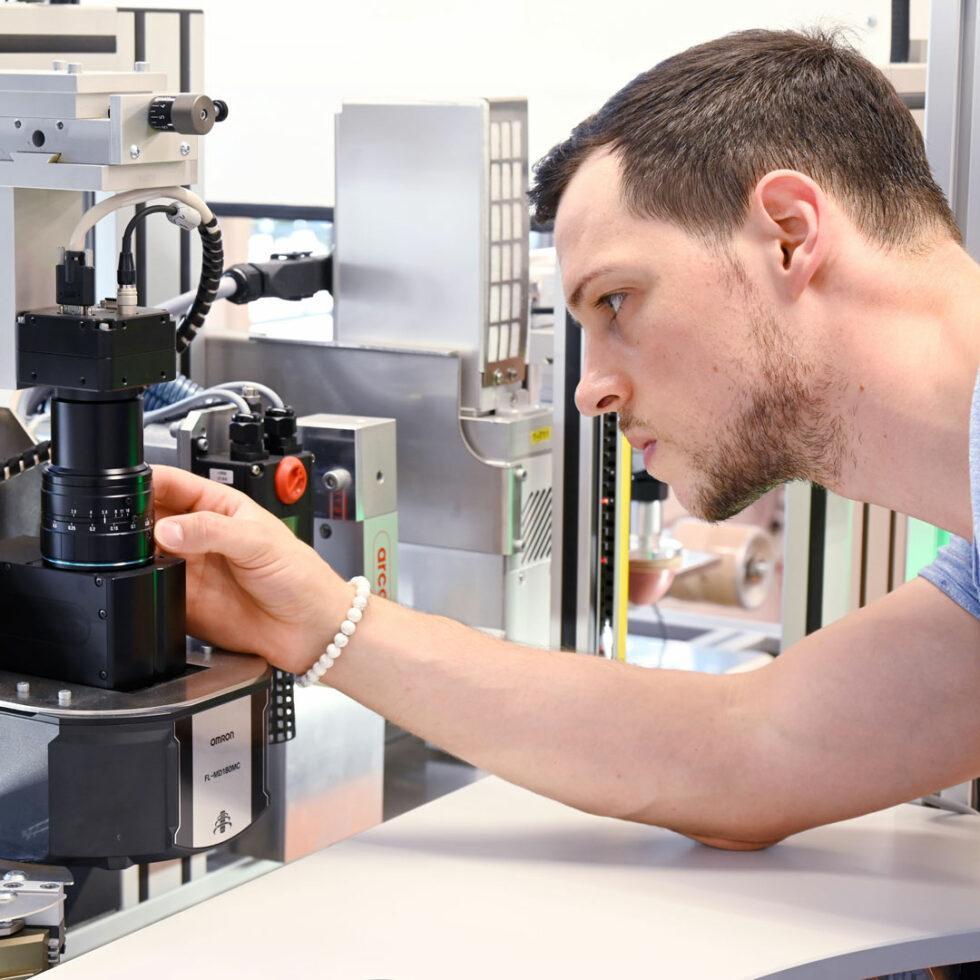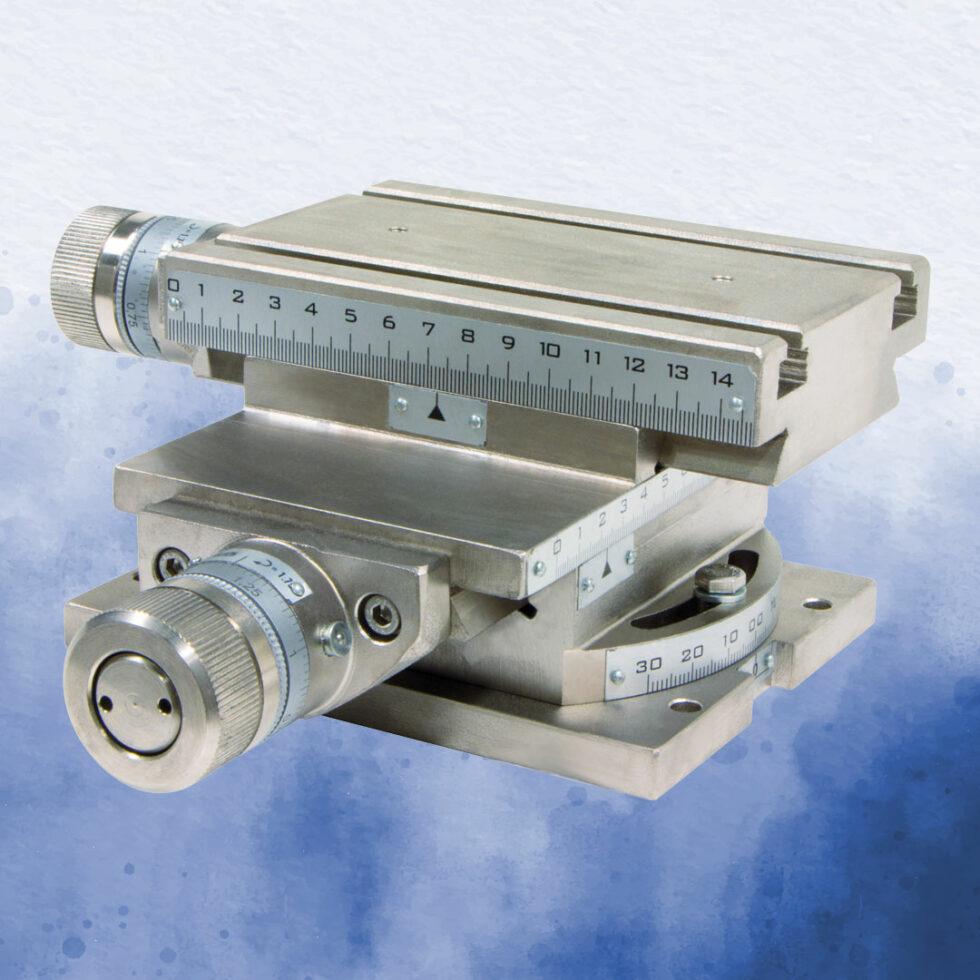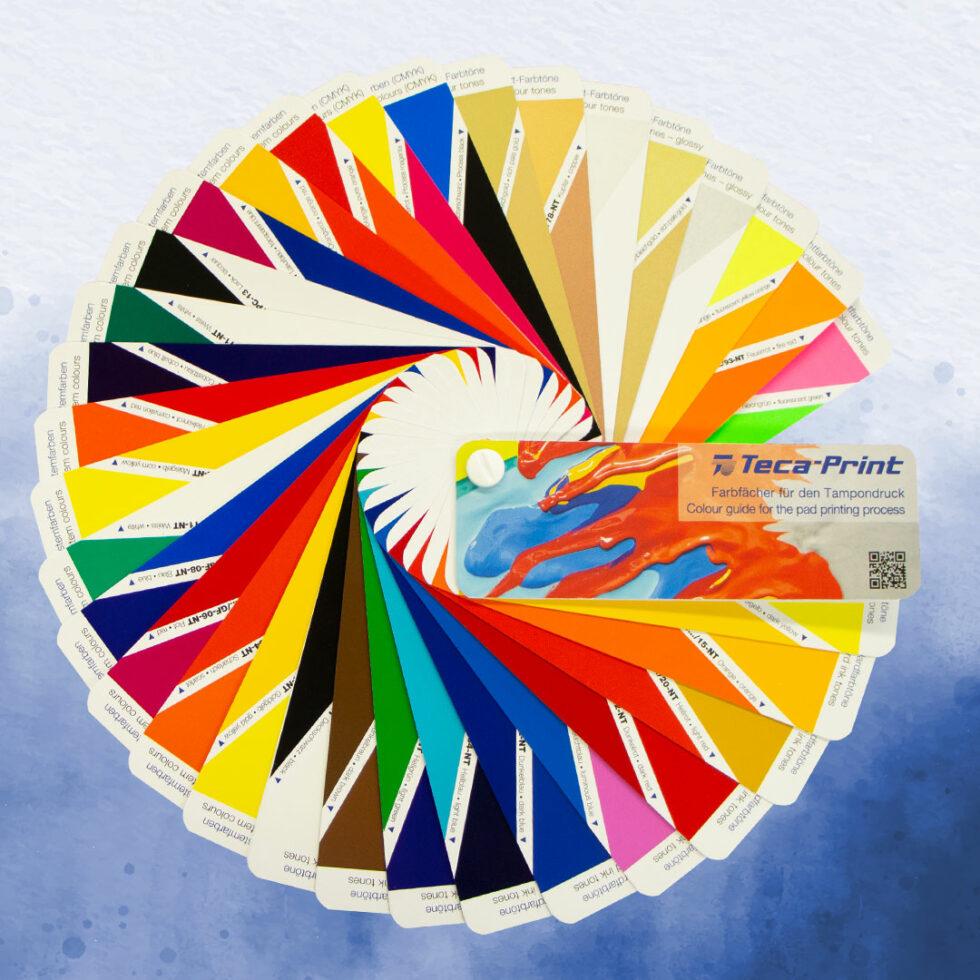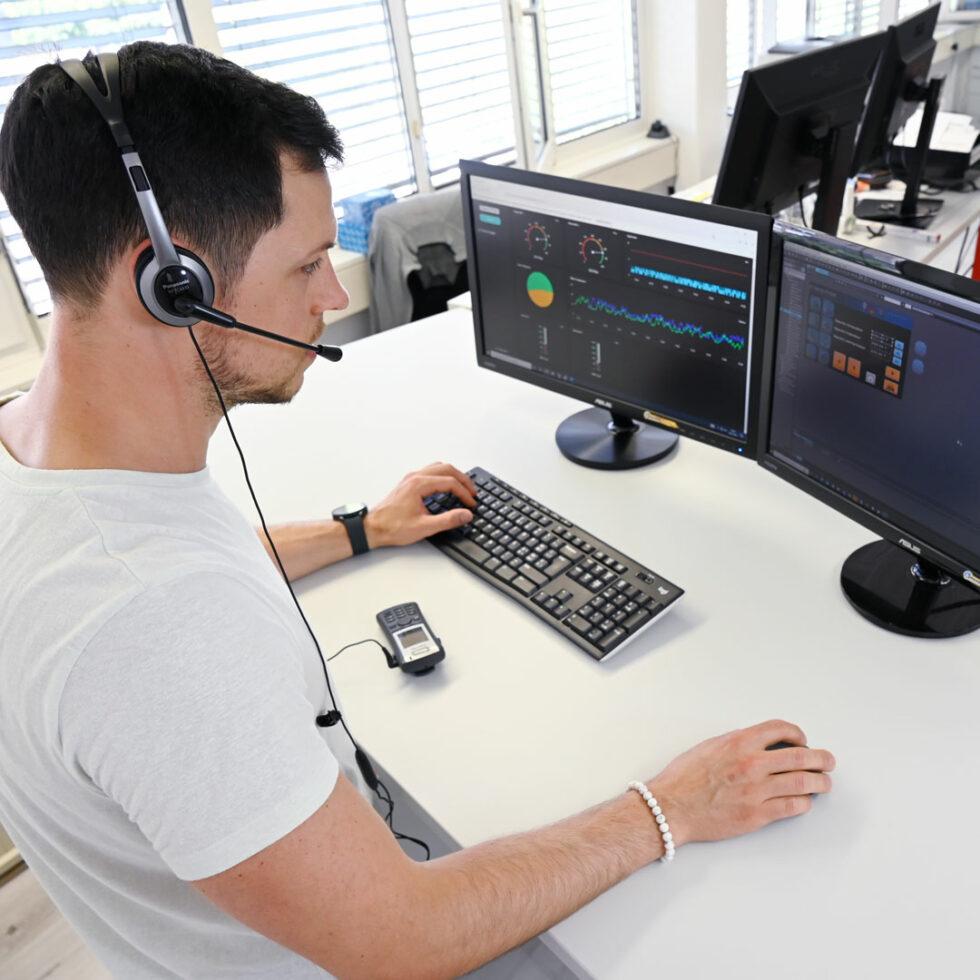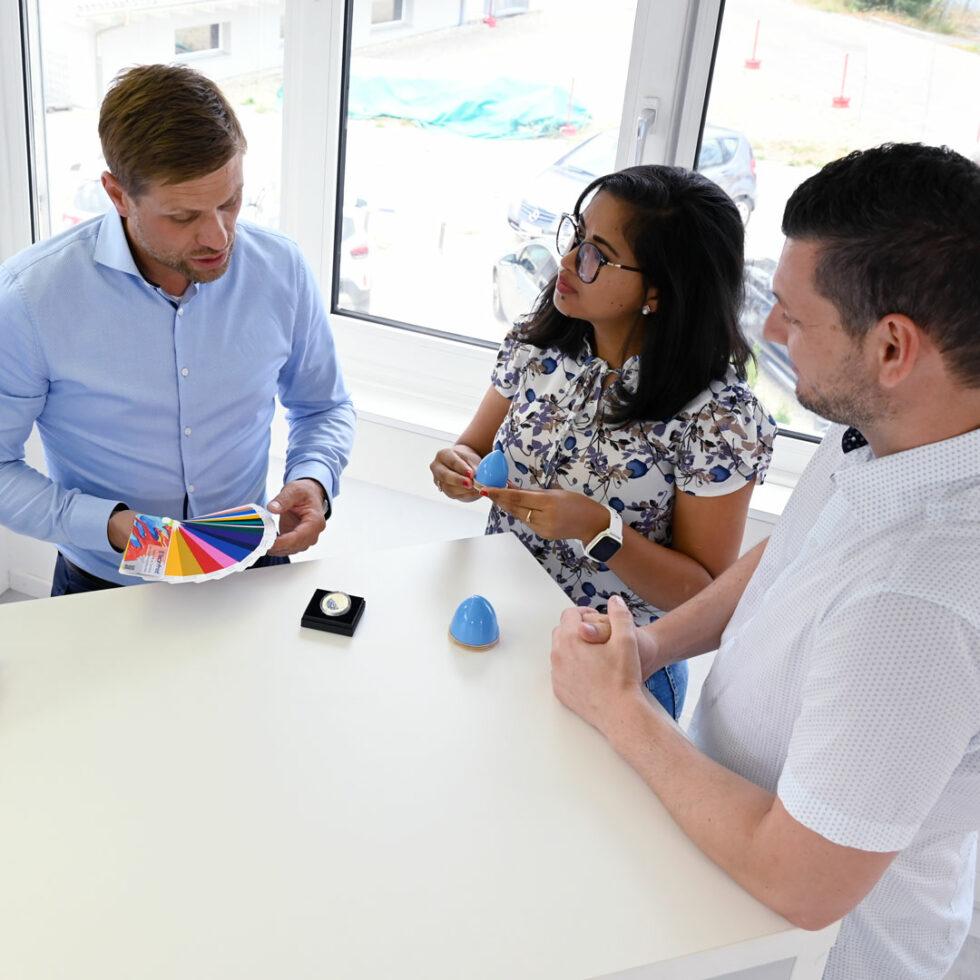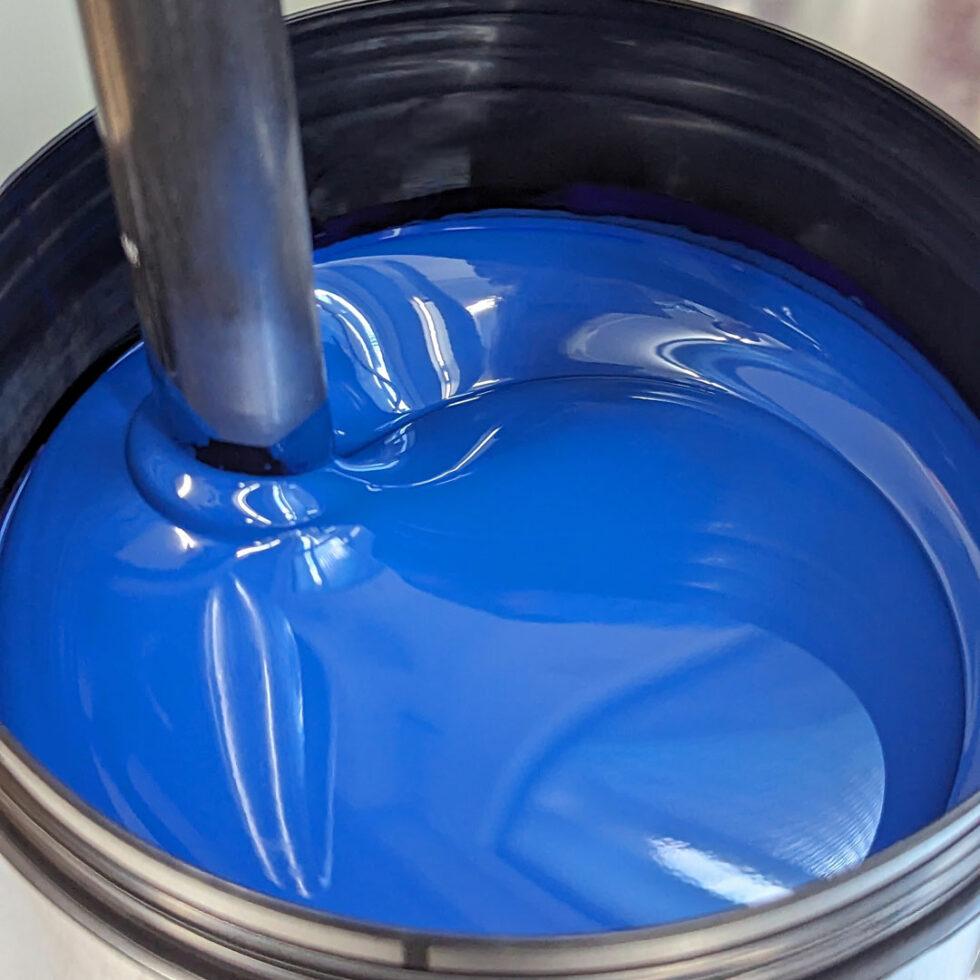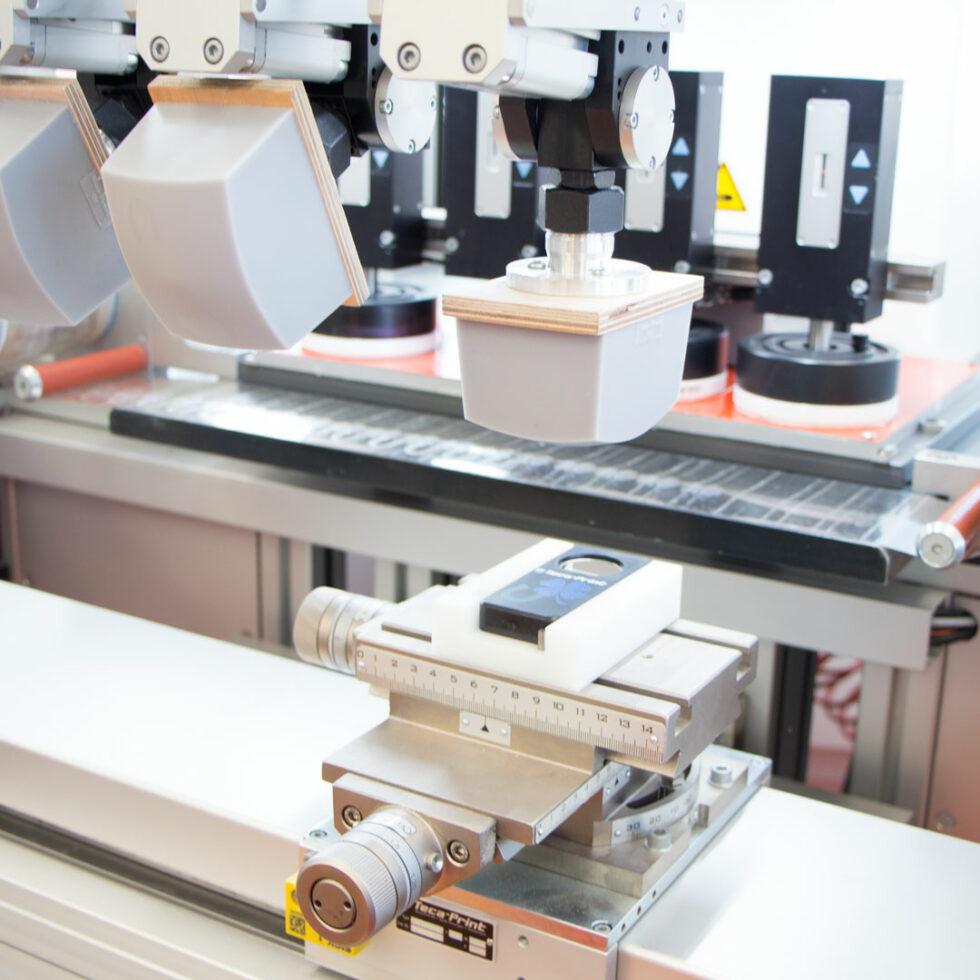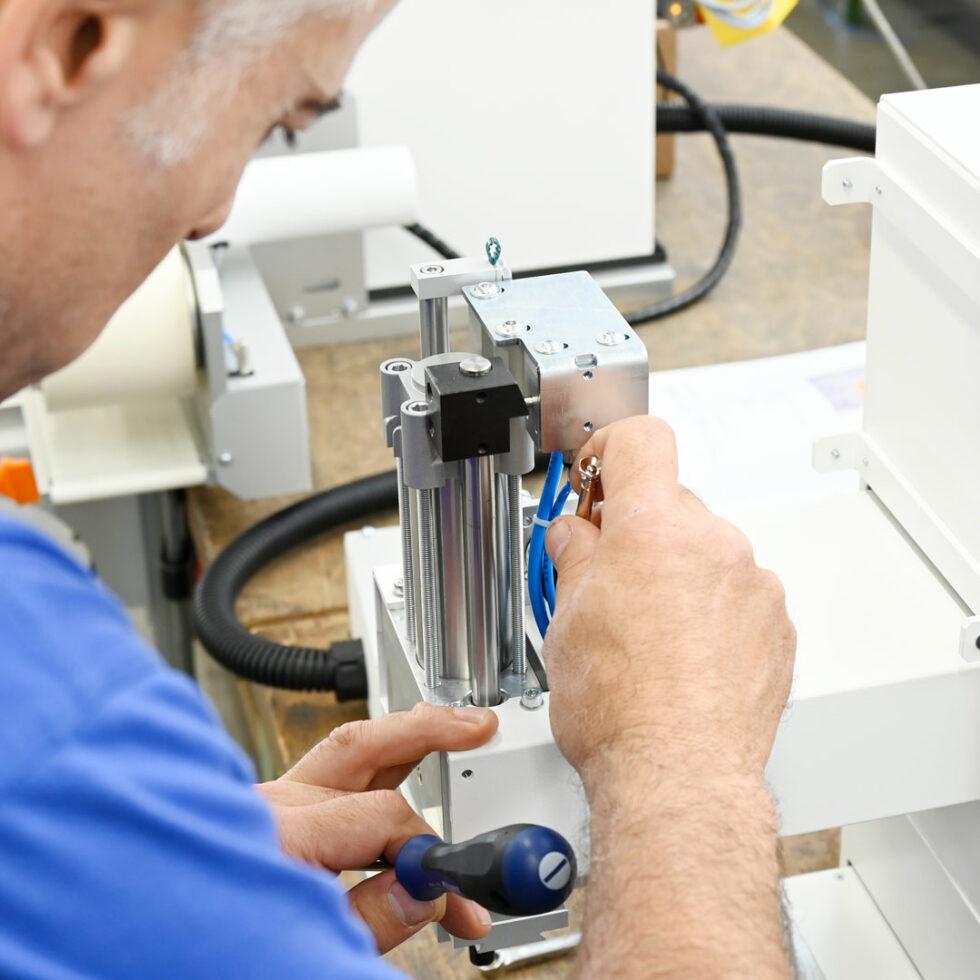Pad printing is an indirect gravure printing process. Indentations are engraved into a flat plate, a cliché. These are filled with ink. An elastic stamp made of silicone rubber picks up some of the ink by pressing on it and transfers it to the object. This stamp is called a pad and gave the printing process its name.
FAQ
"What are the advantages of pad printing?"
Due to the elasticity of the silicone, the pad can adapt to the object to be printed when transferring the ink. This makes it possible to print not only on flat but also uneven surfaces. Surfaces with structure or indentations can also be printed using pad printing. By using pad height levelling, prints at different heights can be carried out in just one printing cycle.
"What applications are possible with pad printing?"
Pad printing is very versatile!
Many objects can be printed without great effort. Consistent further and new developments in consumables such as inks, pads and clichés are constantly opening up new application possibilities.
At the same time, technical innovations are providing ever higher quality and more convenient solutions. Vision systems are increasingly being used, for example. Depending on the customer’s requirements and application, the position of the part in the workpiece holder and/or the print image itself are checked after printing. If desired, the print can even be automatically corrected. For example if the print position is not exactly correct. The use of the camera can be particularly useful for high-quality print objects and avoid the costs of misprints.
"Can I use pad printing in my production?"
Pad printing is used in a wide range of industrial sectors due to its versatility.
Some examples are
- Watch industry
- Coin industry
- Electrical / electronics industry
- miconductor industry
- Computer industry
- Telecommunications industry
- Consumer electronics
- Medical technology
- Optics / Jewellery industry
- Automotive supply industry
- Household appliances
- Sporting goods
- Toy industry
- Brush industry
- Plastic closures
- Plastics industry in general
- Advertising materials industry… etc.
"How thick is the ink film with pad printing?"
The ink layer thickness transferred in pad printing is between 4 and 10 μm. It varies depending on the ink type and colour shade and is also influenced by the ink viscosity, the silicone quality, the engraving depth and environmental influences such as heat and humidity.
"What do I have to consider when printing multiple colours regarding the intermediate drying?"
Due to the thin ink layer that is transferred in pad printing, it is also possible to carry out multi-colour printing “wet-on-wet”, i.e. without intermediate drying. Howewer, often cold air blowing nozzles are used which blow on the printed part.
Peripheral devices are available for multiple colour printings, such as
– Pad sliding devices for 2-colour printing
– Rotary indexing tables
– Shuttle tables
– Transfert Carré (oval conveyor belts)
"What is needed for pad printing?"
- Your product/print object: These can be made of different materials, such as plastics, metal, glass or ceramics.
- Pad printing machine: This is the central piece of equipment for pad printing. Depending on the design and application, it consists of various components.
- Clichés: These are engraved or etched with the desired print image. The clichés are important for transferring the design to the pad.
- Inks: The choice of ink depends on the adhesion requirements. These can be, for example: Abrasion resistance, solvent resistance, glossy or matt finish, weather resistance or resistant to: Greases, oils, cosmetic creams, hand perspiration, acids, alkalis, thinners, petrol, etc.
- Pads: Printing pads are available in various qualities, shapes and hardnesses and are used to pick up the ink from the cliché and then transfer it to the object to be printed.
- Pre-treatment: Some materials, such as polyolefins (polyethylene and polypropylene), cannot be printed on without pre-treatment as their surface tension is too low. This must be at least 38 dynes per cm.
- Post-treatment: Post-treatment of the printed items is usually carried out to make the parts stackable immediately or within a very short time. The printed image is irradiated with a heat source, blown on or flamed with a burner, which causes the thinner on the surface to evaporate more quickly. With two-component inks, chemical curing is accelerated, but molecular linking is only completed after approximately six days.
"Which cliché types are suitable for pad printing?"
The cliché is of decisiv importance in pad printing, as it contains the print image that is transferred to the object to be printed. The quality of the cliché with its engraved print image therefore directly influences the quality of the print.
Cliché types suitable for pad printing are
– Polymer clichés
– Steel clichés
– Thin steel clichés 05
– Ceramic clichés
There are numerous further subdivisions within the respective cliché type, so that the suitable cliché is available for every application and machine equipment.
"What do I need to consider when choosing a pad?"
The printing pad is of central importance in pad printing: It is one of the main factors for a good printing result. Teca-Print produces its pad in-house. Silicone qualities and pad moulds are subject to constant further development. Printing pads are made from silicone and are available in various qualities, shapes and hardnesses.
Pad qualities/silicone qualities and available hardnesses
The printing behaviour of the pad varies depending on the properties of the silicone. Thanks to the wide variety of silicone qualities available, the ideal printing pad can be found for every application in order to optimise the quality of the printing result. The pad hardness is measured in Shore. Teca-Print uses the scale according to system 00 Si. The manufacturing tolerances are ± 2 Shore 00 Si. In general, pad hardness is between 39 Shore 00 Si (very soft) and 70 Shore 00 Si (very hard). In addition to the surface quality and shape of the print object, the printing force of the machine used and the size of the print image must also be taken into account when selecting the pad hardness.
"How can I ensure that the pad printing system is optimally integrated into my production line?"
Our team of experts analyses your processes and offers support in integrating them into your existing production. We customise our solutions to your specific requirements.
"Does Teca-Print offer training for the operation of the pad printing systems?"
Yes, we offer training for your employees. The possibilities with our printing systems are very complex and we want you and your employees to benefit from the full range of services.
"How does Teca-Print guarantee the quality of its products?"
Our products undergo strict quality controls during production. Before despatch, we carry out a thorough pre-acceptance test to ensure that each system meets our high standards.
"Does Teca-Print also offer support after commissioning?"
Yes, our dedicated service and support team is also available to you after commissioning. We offer solutions to any problems occuring, provide support for future developments and upgrades and look forward to a long-term partnership.


